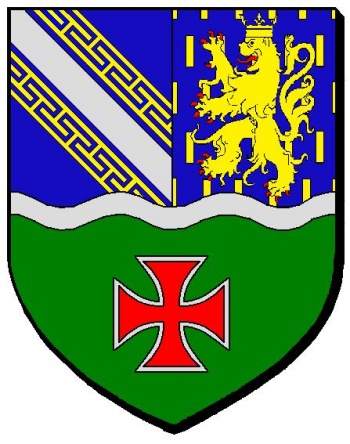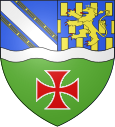Barges, Haute-Saône
Barges is a commune in Haute -Saône in the Franche -Comté.
Geography
Barges located at an altitude of 225 m above sea level, 6 km north- west of Jussey and about 35 km northwest of the city of Vesoul (air line). The village is located in the extreme northwest of the department, on the northern edge of the valley of Mance, west of the height of the Donnet.
The area of 7.91 km ² municipal area includes a portion of the undulating countryside to the west of the upper Saônetals. The southern boundary runs mostly along the Mance, which multi-turn it flows through some two kilometers wide Alluvialniederung to the east. The flood plain is on average 220 m and is used mainly for agricultural purposes. From the river, the municipality's area extends north across the flood plain to the adjacent, slightly undulating landscape in the area of Rambermont and the Bois Juré, in the 290 meters, the highest elevation of Barges is achieved. Large parts of the area are covered with forest. The western boundary runs in the Talniederung of Molerupt. In geological- tectonic terms, the terrain consists of an alternation of sandy- marly and calcareous sediments that were deposited on the merits during the Lias ( Lower Jurassic ). In some places occurs shell apparent from the Triassic.
Neighboring communities of Barges are Blondefontaine in the northeast, and Cemboing Rosières- sur -Mance in the South Voisey in the west and Melay in the northwest.
History
The origin of Barges probably formed a grange of the monastery Faverney, which passed to the Knights Templar before 1182. Owning later moved over the Knights Hospitaller Order of Malta. Until in 1790 Barges belonged to Champagne. With the opening of the railway line from Vesoul to Langres, the place was in 1858 connected to the French railroad network.
Attractions
The Gothic village church of Barges Built in the 16th century and later restored several times and changed. From 1837 the Maison Commune, which housed the municipal administration and until 1971 also a school comes from. The five village wells were built in the mid 19th century.
Population
With 110 inhabitants (2007 ) Barges one of the small towns in the Haute- Saône. After the population had decreased significantly in the first half of the 20th century (1881 388 persons were still counted ), a slight population growth was recorded since the early 1990s again.
Economy and infrastructure
Barges was until well into the 20th century a predominantly by agriculture (crops, orchards and livestock ) and forestry embossed village. Today, there are some establishments of local small businesses, including a nursery. In recent decades the village has been transformed into a residential community. Many workers are therefore commuters who engage in the larger towns in the vicinity of their work.
The village is situated away from the larger passage axes on a secondary road that leads from Blondefontaine after Vitrey -sur -Mance. Further road links exist with Melay and Cemboing. The station has now been decommissioned.
Aisey -et- Richecourt | Barges | La Basse -Vaivre | Betaucourt | Blondefontaine | Bourbévelle | Bousseraucourt | Cemboing | Cendrecourt | Corre | Demangevelle | Jonvelle | Jussey | Magny- lès- Jussey | Montcourt | Ormoy | Passavant- la- Rochere | Rain Court | Ranzevelle | Tartécourt | Villars -le- Pautel | Vougécourt
- Commune in the department of Haute- Saône
- Place in Franche -Comté









